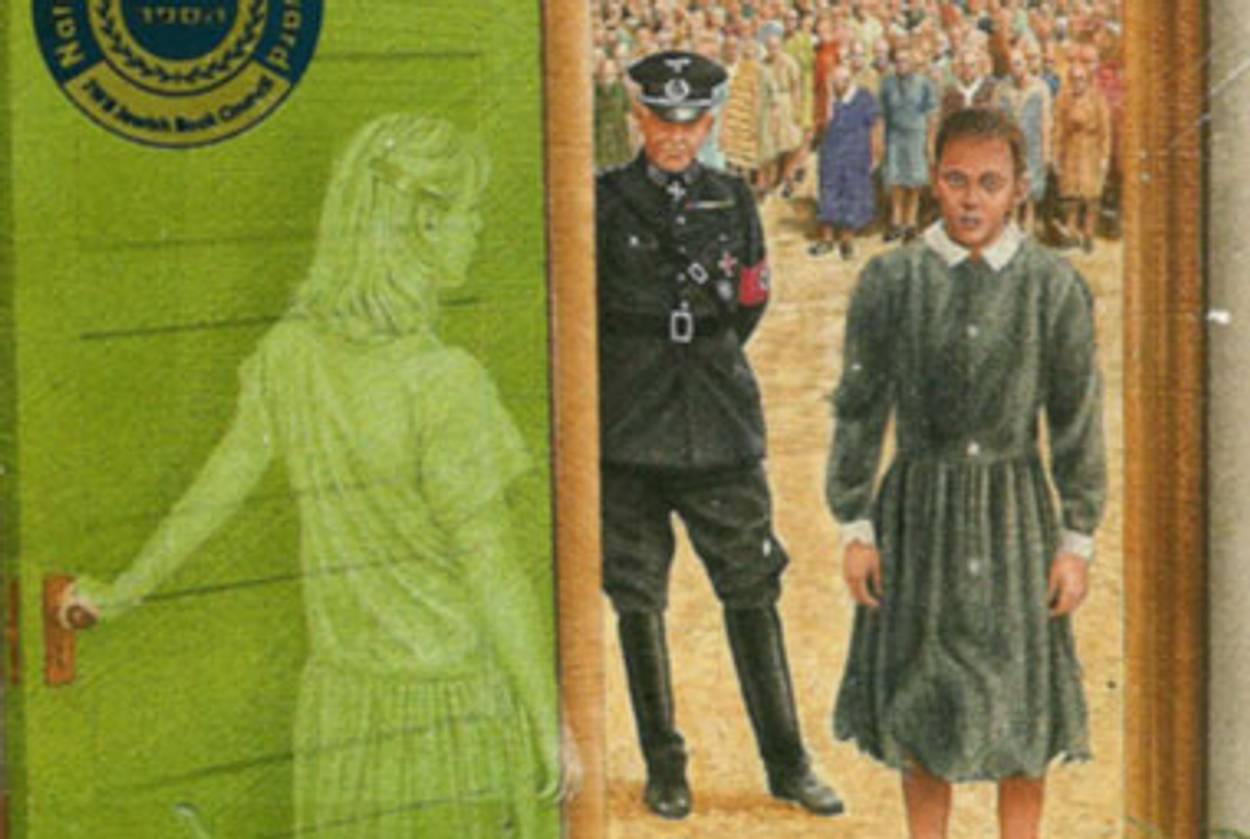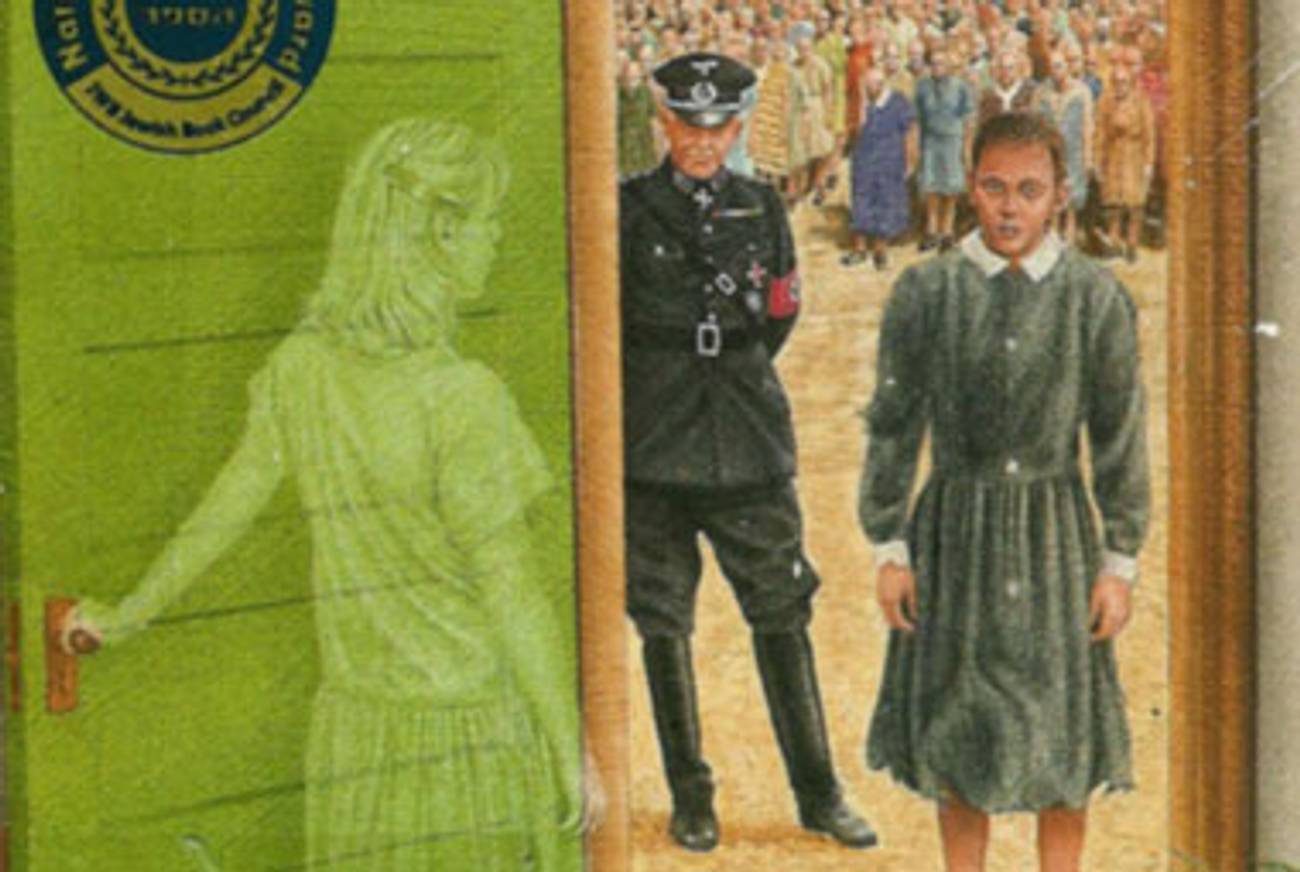My First Holocaust
The children’s books that traumatized a generation




Do you remember the Jewish books of your childhood? Many seemed to provide as much terror as pleasure. I was an easily traumatized child, so everything scared me. When Henny borrowed Ella’s fancy dress in All-of-a-Kind Family and got a stain on it, I felt sick with fear. (Sure, Henny dyed it with tea and everything was fine, but, my God, what if it hadn’t worked?)
For many of us, though, the Holocaust was the real emotional goldmine, providing thrills, misery, and catharsis. For those of us who came of age in the ’70s and ’80s, Holocaust books had particular resonance, perhaps because we were distant enough from the factual horrors to be able to experience them as art, but close enough that they still had immediacy. And though many adults seemed to want us to experience only joyless terror from Holocaust literature, we loved every page of our fear. We asked our friends and fans on Facebook to share with us their favorite, sweet traumas; behold, then, their reminiscences.
* * *
Andrea Monfried, art-book editor: I’m thinking of a scene in
When Hitler Stole Pink Rabbit by Judith Kerr. It was when they put that professor in a cage and made him bark until he lost his mind. I never got over that, and yet I loved that book. I read it and reread it. It reminds me of a friend’s kid who got obsessed with a picture of the devil on a movie poster; if he saw it in the subway he had to close his eyes and they had to carry him out of there screaming. I believe they also had to do some kind of stomp-three-times ceremony to banish the devil. That was what Pink Rabbit was like for me, that one scene.
Robin Aronson, writer: I lived in the Holocaust section of the Providence Hebrew Day School library—was there any other section?—during recess. I Never Saw Another Butterfly? Puh-lease, that was an aperitif; I read them all. The trauma must have sunk in deep, because even though I remember very little from those books, I rarely carry one of my sleeping children across the apartment without thinking “What if I had to do this while running from the Gestapo?”
Betsy Schwartz, systems administrator: I read Elie Wiesel’s Night when I was 13. Too young. What scared me about it, besides everything? In addition to the catalog of horrors, the fact that near the beginning of the book, the village is warned about the death camps and they don’t believe because it’s the middle of the 20th century. That made the story frighteningly present-day for me. Plus, you know, the catalog of horrors.
Abigail Miller, Tablet’s assistant art director: The Devil’s Arithmetic, by Jane Yolen. It takes the latent necrophilia of your usual YA Holocaust novel to its logical extreme. Bratty contemporary young girl protagonist Hannah is opening the door for Elijah at her family’s seder when the door magically opens into the shtetl and Hannah becomes Chaya, a Polish girl in the 1940s. But this is not a Magic Tree House book: Chaya not only ends up in the camps, but dies there. Through the doors of the gas chamber, Hannah returns to the door of her grandparents’ apartment and the Chaya within her recognizes her old relatives, Wizard of Oz style. The young reader is, like Hannah, supposed to come away with a renewed respect for crotchety old survivors, but as a child, I was just wrapped up in the terrifying ghost story of it.
Amanda Clayman, financial advisor: Though I enjoyed Judy Blume’s Starring Sally J. Freedman as Herself, which is set in Miami in 1947, I was very disturbed by Sally’s fantasy that her neighbor was Hitler. Then there was the fact that the family was living apart (Dad was in New Jersey, the rest of the family was in Florida), and the family sitting shiva for a daughter who marries a goy. It was distressing.
Jessica Seigel, writer: Hands down the creepiest kids book of all time has to be Der Struwwelpeter. It was the Mother Hubbard of Germanic culture (I was born in Basel, Switzerland). It was given to me at age 3, which is how I know the horror. My mother confiscated it from the babysitter when she caught sight of it, but the damage was done in my child brain. I will never forget it. I lost the copy, but when you see the pictures of kids burning up from playing with matches, their thumbs cut off from thumbsucking and other horrors visited on bad children, you will understand Auschwitz better.
* * *
But the ur-text of Jewish childhood literary terror, is, of course, the Torah. Army-killing oceans (Exodus 14). People getting sucked into the earth, just like in Tremors (Numbers 16). Murderous foreskin collection (Samuel 18). Perhaps fittingly, in her academic work at the Jewish Theological Seminary, Professor Amy Kalmanofsky applies horror theory to biblical texts, looking at how the Torah is designed to terrify its audience. The author of Terror All Around: The Rhetoric of Horror in the Book of Jeremiah (and surely the only monster-movie-obsessed feminist Jewish scholar with a Facebook fan page), Kalmanofsky is interested in how Jewish stories scare us and why.
“There’s a natural nexus between horror and religion,” she says. “Religion is, at its core, about coming to terms with mortality, with our helpless, vulnerable, decaying selves. I actually think that in some ways horror movies and books function for us now the way religion used to function. They help us wrestle with death.”
Marjorie Ingall is a columnist for Tablet Magazine, and author of Mamaleh Knows Best: What Jewish Mothers Do to Raise Successful, Creative, Empathetic, Independent Children.
Marjorie Ingall is a former columnist for Tablet, the author of Mamaleh Knows Best, and a frequent contributor to the New York Times Book Review.